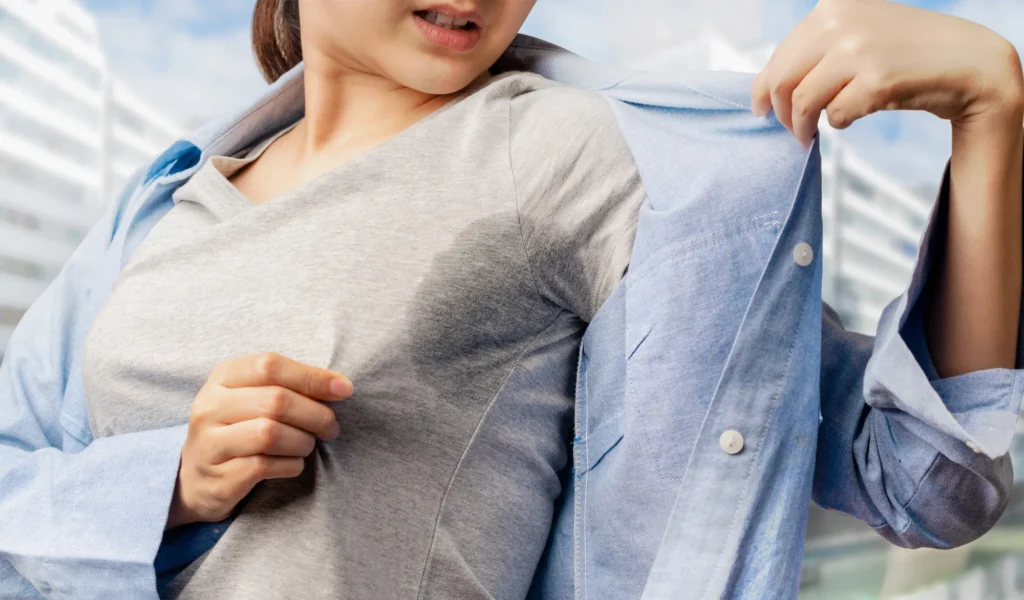Sweating is a natural process that helps our bodies regulate temperature, but when it becomes too much, it can interfere with daily life. Excessive sweating, also known as hyperhidrosis, affects millions of people around the world. It is more than just a physical issue; it can impact confidence, social interactions, and even work performance.
The good news is that there are effective treatments available that can help you manage excessive perspiration and regain control over your comfort and confidence. In this article, we will explore the causes of excessive sweating, when it might signal a medical concern, and the different treatment options available today.
What Is Excessive Sweating?
Excessive sweating is a condition where the body produces more sweat than it needs to regulate temperature. While sweating is normal during hot weather or exercise, people with hyperhidrosis often sweat heavily even when resting or sitting in a cool environment.
This condition can affect different areas of the body, including the underarms, palms, feet, and face. It can be unpredictable and frustrating, but the key to dealing with it is understanding why it happens and what you can do about it.
What Can Cause Excessive Sweating?
Excessive sweating can be divided into two main categories:
- Primary hyperhidrosis: This type usually starts in childhood or adolescence and has no underlying medical cause. It often affects specific areas like the underarms, hands, or feet.
- Secondary hyperhidrosis: This occurs due to an underlying medical condition such as thyroid problems, diabetes, infections, or as a side effect of certain medications. It tends to cause sweating across larger areas of the body.
Other factors that may trigger excessive perspiration include stress, hormonal changes such as menopause, obesity, and certain lifestyle habits. Understanding the cause helps determine the best treatment option.

Treatments For Excessive Sweating
The most important thing to know is that excessive sweating is treatable. Modern aesthetic medicine and dermatology offer several safe and effective options for controlling unwanted sweating. Here are some of the most common treatments:
- Antiperspirants: Strong clinical-grade antiperspirants are often the first step. They block sweat glands and can help manage mild cases of hyperhidrosis.
- Prescription medications: Certain oral medicines reduce sweat production by targeting the overactive nerves responsible for triggering sweat glands.
- Botox injections: Botox is one of the most effective treatments for underarm sweating. By temporarily blocking the signals that activate sweat glands, it can keep the area dry for several months at a time.
- Iontophoresis: This treatment uses a low-level electrical current delivered through water to reduce excessive sweating, particularly in the hands and feet.
- Microwave therapy: Some clinics offer devices that use microwave energy to permanently destroy sweat glands in the underarms, offering long-term relief.
- Surgical options: In severe cases, a procedure called sympathectomy may be considered, where certain nerves responsible for triggering sweat are cut or removed.
Lifestyle Tips For Hyperhidrosis
In addition to medical treatments, small changes in your daily routine can make a big difference in controlling excessive sweating. Wearing loose, breathable clothing made from natural fabrics like cotton can help keep your body cool and reduce sweat buildup. Choosing moisture-wicking socks and changing them regularly can also prevent excessive foot sweating.
Maintaining good hygiene habits is equally important. Regular showers, using antibacterial soaps, and applying clinical-strength antiperspirants before bedtime can help manage sweating effectively. Avoiding known sweat triggers such as spicy foods, caffeine, and stress can also reduce flare-ups. Incorporating stress-reducing practices like yoga, meditation, or breathing exercises may help calm your nervous system and decrease sweat production.
When To See A Doctor?
While occasional sweating is normal, excessive sweating that disrupts daily life should not be ignored. If you find yourself sweating excessively even when you are not hot, stressed, or physically active, it may be a sign of an underlying condition such as hyperhidrosis.
It’s also important to seek medical advice if excessive sweating is accompanied by other symptoms such as chest pain, dizziness, shortness of breath, or unexplained weight loss. Consulting a doctor will help you determine whether your sweating is a medical concern and allow you to explore safe and effective treatment options.
Regain Confidence With Excessive Sweating Treatments
Living with excessive sweating can feel frustrating, but it does not have to control your life. With today’s advanced treatments, from Botox to laser-based therapies, there are reliable solutions that can help you manage the condition and improve your quality of life.
If sweating is interfering with your daily routine or lowering your confidence, consulting with a trusted aesthetic or dermatology clinic is the first step. With the right treatment plan, you can stay dry, feel comfortable, and regain the confidence you deserve.


